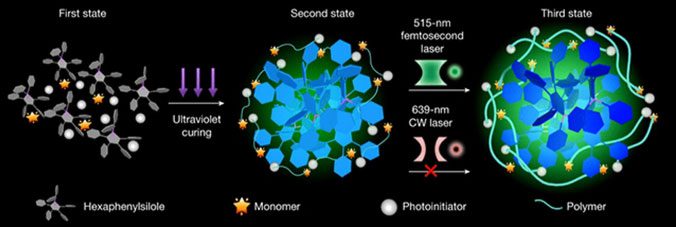The demand for large storage capacity continues to rise. Fortunately, we are exploring an advanced method that can store more data in the same physical space on optical discs.
This new method is based on optical data storage using light (ODS), which is still used for recording DVDs. The difference is that it operates in three-dimensional space, meaning there will be hundreds of layers instead of just one, significantly increasing storage capacity.

3D optical data storage can compress a million movies onto a single disc. (Image: Shanghai University of Science and Technology).
The research team stated that the new method can record petabits of data on a single disc, which is thousands of trillion bits, equivalent to about 1 million standard-definition movies, all on a disc the size of a typical DVD.
With many such discs, we are entering the exabit range, which is one million trillion bits, without requiring excessive storage space.
According to the researchers, with this technology, we can store at the exabit level by stacking nano-sized discs together. This has significant implications for massive data centers that have limited physical space.

Concentrated light and color combine to record data. (Image: Zhao/Nature, 2024).
This method also introduces a new storage medium called AIE-DDPR, which stands for Aggregated Emission Color Phase Conductor. This is a thin film that allows data to be recorded at ultra-high resolution. Different forms of light are applied to the film’s surface, partly due to the color-conducting material within the film and partly due to the combination of molecules in the film that can capture and react to light.
Researchers hope this new technology can help us overcome the limitations of large storage space in an era of rapidly advancing digital technology and an increasing “thirst” for data. Currently, data centers commonly use primary storage technologies such as flash memory devices and hard drives. This approach consumes a lot of energy and operational costs, while having a short lifespan.
It should also be noted that to widely adopt this new technology, we need to overcome several challenges, such as increasing the ODS capacity to meet the demands of a data center. At the same time, it also needs to be improved to operate faster and more efficiently.
The researchers have some ideas to turn this into reality. Once successfully implemented, the new method will offer clear benefits: significantly reduced storage space, lower maintenance costs, and less energy consumption.


















































